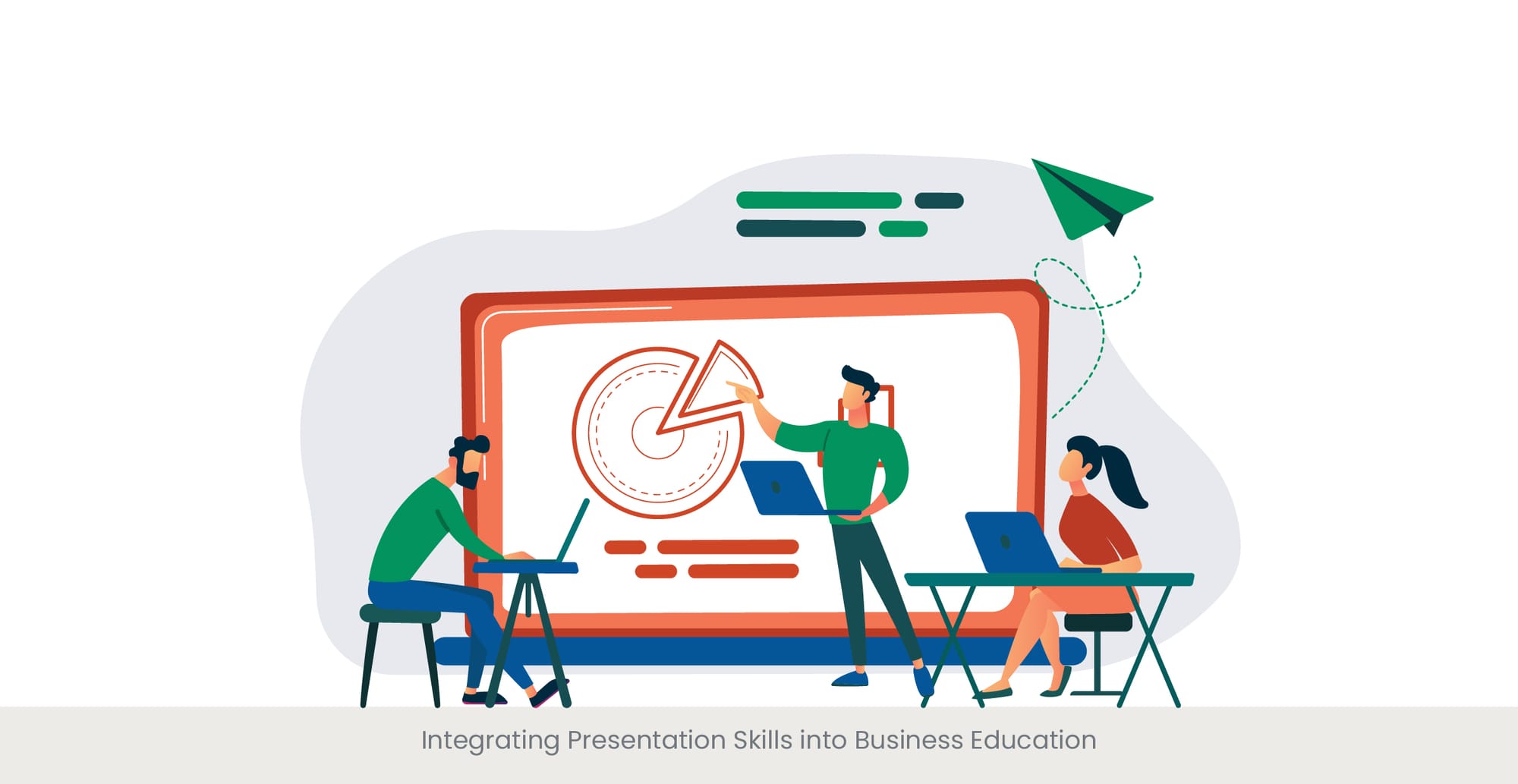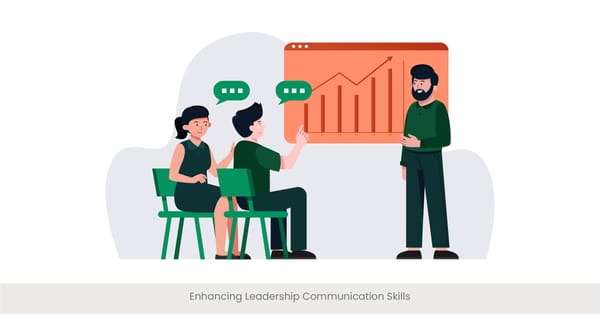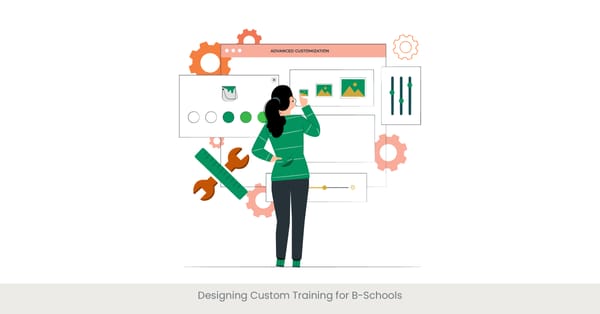
Recognizing the Importance of Presentation Skills in Business Education

Introduction: The Essential Role of Presentation Skills
Presentation skills are a fundamental component of business education. They enable students to effectively communicate ideas, influence decision-makers, and present themselves as confident professionals. Recognizing the importance of these skills is crucial for preparing students to meet the demands of the business world, where the ability to deliver high-impact presentations can significantly impact career success.
Background: The Growing Emphasis on Communication in Business
In today’s business environment, strong communication skills are more important than ever. As companies become more global and collaborative, the need for clear and persuasive communication has intensified. Business schools have responded by integrating presentation skills into their curricula, recognizing that these skills are not just nice-to-have but essential for success. Historical trends show a shift from traditional lecture-based teaching to more interactive and student-centered learning approaches, which emphasize the development of practical communication skills.
Real-World Applications: Success Stories and Trends
A notable example is Harvard Business School, which incorporates extensive presentation training into its MBA program. Students participate in business school presentation workshops where they practice delivering pitches, conducting meetings, and presenting case studies. These experiences are designed to simulate real-world business scenarios, providing students with valuable feedback and honing their presentation abilities. Additionally, trends show that employers increasingly prioritize candidates with strong presentation skills, as they are indicative of leadership potential and effective communication capabilities.
References and Validation
Research from the National Association of Colleges and Employers (NACE) highlights that presentation skills are among the top attributes sought by employers. According to a study by the American Management Association, professionals who excel in presentation skills are 45% more likely to be promoted. Furthermore, feedback from students who have undergone presentation skills modules indicates a significant improvement in their confidence and effectiveness in professional settings.
Incorporating Presentation Design Training into Business School Curriculum

Introduction: Enhancing Visual Communication Skills
Incorporating presentation design training into the business school curriculum is essential for equipping students with the skills needed to create visually compelling and effective presentations. This training ensures that students can communicate complex information clearly and engagingly, using design principles that enhance their message delivery.
Background: The Importance of Visual Design in Business Communication
Presentation design involves more than just creating attractive slides; it requires an understanding of how to use visuals to support and enhance verbal communication. Effective presentation design training covers various aspects such as layout, color theory, typography, and the use of multimedia. Historically, the emphasis on visual communication has grown as businesses recognize the impact of well-designed presentations in persuading audiences and informing audiences.
Real-World Applications: Implementing Design Training
An example of successful implementation can be seen at the Stanford Graduate School of Business, which offers a dedicated course on presentation design as part of its MBA program. Students learn to apply design principles to their business presentations, creating slides that are not only aesthetically pleasing but also effective in conveying their messages. These courses often include practical projects where students design and present business cases, receiving feedback on both content and design.
References and Validation
According to a study by Presentation Panda, presentations with well-designed visuals are 43% more persuasive than those without. Furthermore, a report by the Harvard Business Review emphasizes that visually engaging presentations can increase audience retention by up to 80%. Feedback from students who have completed presentation design modules at top business schools indicates a significant improvement in their ability to create professional, impactful presentations.
Offering Elective Courses and Specializations in Presentation Skills

Introduction: Expanding Educational Opportunities
Offering elective courses and specializations in presentation skills provides business students with the opportunity to delve deeper into the art of effective communication. These courses allow students to develop specialized skills that are critical for their professional success, enhancing their ability to stand out in competitive business environments.
Background: The Value of Specialized Training
Elective courses and specializations in presentation skills go beyond the basic curriculum, offering focused and tailored training that addresses specific aspects of communication, such as public speaking, visual design, and persuasive techniques. Historically, business schools have recognized the need for such specialized and training courses as the business world increasingly values the ability to deliver compelling presentations. These courses are designed to provide in-depth knowledge and hands-on experience, preparing students for high-stakes presentations.
Real-World Applications: Successful Program Implementations
For example, the Wharton School of the University of Pennsylvania offers an elective course titled "Advanced Presentation Skills," where students engage in intensive practice sessions, receive personalized coaching, and participate in business school presentation workshops. These sessions are designed to have participants refine their skills in delivering confident, high-impact presentations. The course also includes guest lectures from industry leaders who share insights and real-world examples of effective presentation techniques, bridging the gap between academic learning and practical application.
References and Validation
A study by the Graduate Management Admission Council (GMAC) found that 78% of employers consider presentation skills to be a crucial competency for business graduates. Additionally, feedback from students who have taken elective courses in presentation skills indicates a significant boost in their confidence and effectiveness when presenting in professional settings. Programs like those offered at Wharton have been shown to enhance students' communication skills, making them more attractive candidates in the job market.
Infusing Presentation Skills into Core Business Courses

Introduction: Integrating Communication into the Core Curriculum
Infusing presentation skills into core business courses ensures that all students, regardless of their specialization, develop essential communication competencies. This approach integrates presentation training with fundamental business subjects, reinforcing the importance of effective communication in various business contexts.
Background: The Role of Communication Across Disciplines
Core business courses such as finance, marketing, management, and strategy often require students to present complex information clearly and persuasively. By integrating presentation skills into these courses, business schools can help students apply communication techniques directly to their field of study. Historically, this method has proven effective in reinforcing the relevance of communication skills across different business functions and industries.
Real-World Applications: Effective Integration Strategies
An effective example of this integration is seen at the Kellogg School of Management, where presentation skills are woven into the core curriculum. In courses like "Strategic Management" and "Marketing Analytics," students are required to present their analysis and recommendations as part of their assessments. These presentations are critiqued not only for their content but also for their delivery, visual design, and ability to engage the audience. This comprehensive approach ensures that students develop strong communication skills alongside their technical and analytical abilities.
References and Validation
Research from the AACSB (Association to Advance Collegiate Schools of Business) indicates that business programs which integrate presentation skills into their core curriculum report higher levels of student engagement and improved learning outcomes. Additionally, a survey by the Business Communication Quarterly found that 90% of business executives believe that integrating communication training into core courses significantly enhances students' readiness for the professional world. Feedback from alumni of programs like those at Kellogg underscores the value of this integrated approach in preparing them for successful careers.
Providing Hands-on Workshops and Simulation Exercises

Introduction: Enhancing Learning Through Practical Experience
Hands-on workshops and simulation exercises are vital components of business education that enhance students' learning experiences by allowing them to apply theoretical knowledge in practical settings. These activities help students develop essential presentation skills by practicing in realistic scenarios and receiving immediate feedback.
Background: The Pedagogical Benefits of Experiential Learning
Experiential learning, which involves learning through action, reflection, and feedback, has long been recognized as an effective educational approach. Hands-on workshops and simulations provide students with opportunities to engage actively with the material, collaborate with peers, and refine their skills in a supportive environment. These methods are particularly beneficial for developing communication skills, as they mimic real-world business situations where effective presentation and public speaking skills are crucial.
Real-World Applications: Implementing Effective Workshops and Simulations
For example, the University of Virginia’s Darden School of Business incorporates extensive use of simulation workshop exercises in its curriculum. Students participate in business school presentation workshops where they present case studies, conduct mock board meetings, and simulate investor pitches. These workshops are designed to replicate high-pressure business environments, enabling students to practice their presentation skills in realistic contexts. The hands-on nature of these workshop activities ensures that students can experiment with different communication techniques and receive constructive feedback from instructors and peers.
References and Validation
Studies published in the "Journal of Experiential Education" indicate that students who participate in hands-on workshops and simulations exhibit a 30% improvement in their presentation skills compared to those who engage only in traditional lecture-based learning. Additionally, feedback from business school graduates highlights the effectiveness of these experiential learning methods in preparing them for real-world challenges. Alumni from programs like Darden’s report increased confidence and competence in their ability to deliver high-impact presentations.
Leveraging Technology for Interactive Learning and Practice

Introduction: Embracing Digital Tools for Enhanced Learning
The integration of technology in education has transformed the way students learn and practice presentation skills. Leveraging technology for interactive learning and practice provides students with innovative tools to enhance their communication capabilities and adapt to the demands of the modern business world.
Background: The Role of Technology in Education
Technology has revolutionized business education by offering interactive platforms and tools that facilitate more engaging and effective learning experiences. From virtual simulations to online collaboration tools, technology enables students to practice and refine their presentation skills in dynamic and immersive environments. Historical trends show a significant shift towards digital learning platforms, especially in response to the growing need for remote and hybrid education models.
Real-World Applications: Utilizing Technological Tools
For instance, many business schools now use virtual reality (VR) and augmented reality (AR) to create immersive presentation simulations. The University of Michigan's Ross School of Business has incorporated VR into its curriculum, allowing students to practice their presentations both in person in a virtual boardroom or conference setting. Additionally, online platforms like Zoom and Microsoft Teams are used for virtual meetings and presentations, helping students become proficient in delivering presentations in both in-person and virtual environments. These tools also facilitate real-time feedback and collaboration, further enhancing the learning experience.
References and Validation
Research from the "Journal of Educational Technology & Society" indicates that students who use technology-enhanced learning tools show a 35% improvement in their presentation skills. A survey conducted by the National Business Education Association (NBEA) found that 85% of business schools reported increased student engagement and improved learning outcomes through the use of interactive technologies. Feedback from students at Ross School of Business highlights the effectiveness of VR simulations in building confidence and competency in presentation delivery.
Engaging Industry Professionals as Guest Speakers and Mentors

Introduction: Bridging the Gap Between Academia and Industry
Engaging industry professionals as guest speakers and mentors is a powerful strategy for integrating real-world insights into business education. This approach provides students with practical knowledge and firsthand experiences from seasoned professionals, enhancing their understanding of business context, leadership, and industry practices and expectations.
Background: The Value of Industry Expertise in Education
Industry professionals bring a wealth of experience and practical wisdom that enrich the academic environment. Their involvement in business education helps bridge the gap between theoretical knowledge and real-world application. Historically, business schools have recognized the importance of incorporating industry perspectives and expertise into their curricula to ensure that students are well-prepared for the challenges of the business world.
Real-World Applications: Implementing Guest Lectures and Mentorship Programs
For example, the London Business School regularly invites executives from top companies to deliver guest lectures and participate in mentorship programs. These sessions cover a wide range of topics, including strategic management, marketing trends, and leadership development. Students gain valuable insights into the latest industry trends and best practices, as well as opportunities to network with influential professionals. Additionally, mentorship programs pair students with industry leaders who provide personalized guidance and career advice, fostering professional growth and development.
References and Validation
According to a report by the Graduate Management Admission Council (GMAC), 92% of business students found guest lectures by industry professionals to be highly beneficial for their learning experience. A study published in the "Journal of Business Education" highlighted that mentorship programs significantly enhance students' career readiness and professional networking skills. Feedback from students at the London Business School indicates that interactions with industry professionals have greatly enriched their educational experience and provided valuable career insights.
Facilitating Internship Opportunities to Apply Presentation Skills

Introduction: Gaining Practical Experience Through Internships
Internships provide business students with invaluable opportunities to apply their presentation skills in real-world settings. Facilitating these opportunities is crucial for helping students transition from academic learning to professional practice, allowing them to gain hands-on experience and refine their communication abilities.
Background: The Role of Internships in Business Education
Internships have long been an integral part of business education, offering students practical experience that complements their academic studies. These opportunities enable students to work on real projects, interact with industry professionals, and develop essential skills such as public speaking, visual design, and effective communication. By integrating internships into the curriculum, business schools ensure that students are well-prepared for the demands of the business world.
Real-World Applications: Successful Internship Programs
For example, the University of Chicago Booth School of Business has a robust internship program that places students in leading companies across various industries. During the course content their internships, students are often required to present and discuss their work to senior leaders, providing a practical application of the presentation skills they have developed in their coursework. These experiences not only enhance their communication skills but also build their confidence and professional networks.
References and Validation
Research from the National Association of Colleges and Employers (NACE) indicates that students who complete internships are 70% more likely to receive job offers upon graduation. Additionally, a survey by the Association to Advance Collegiate Schools of Business (AACSB) found that 80% of employers value internship experience as a key factor in hiring decisions. Feedback from Booth School of Business alumni highlights the significant impact of internships on their career readiness and presentation competencies.
Measuring Student Progress and Competency in Presentation Skills

Introduction: Evaluating the Effectiveness of Presentation Training
Measuring student progress and competency in presentation skills is essential for ensuring that educational programs effectively develop these crucial abilities. By implementing robust assessment methods, business schools can track student improvement, identify areas for further development, and enhance the overall quality of their training programs.
Background: The Importance of Comprehensive Assessment
Effective assessment of presentation skills involves a combination of formative and summative evaluations. Formative assessments provide ongoing feedback that helps students refine their skills throughout the course, while summative assessments evaluate their overall competency at the end of the training period. Key components of these assessments include evaluating public speaking, visual design, audience engagement, and the ability to convey complex information clearly.
Real-World Applications: Implementing Assessment Strategies
At the MIT Sloan School of Management, a comprehensive assessment framework is used to measure student progress in presentation skills. This framework includes peer reviews, self-assessments, and instructor evaluations, focusing on various aspects such as content organization, delivery style, and visual aids. Students participate in regular presentation exercises, receiving detailed feedback that helps them improve continuously. Additionally, capstone projects often require students to present their findings, providing a summative evaluation of their presentation competencies.
References and Validation
A study published in the "Journal of Business and Technical Communication" found that structured assessment programs significantly improve student presentation skills, with a reported 25% increase in competency levels over a semester. According to the National Communication Association, regular feedback and structured assessments are critical for developing effective presentation skills. Feedback from MIT Sloan students indicates that the comprehensive assessment approach has greatly enhanced their ability to deliver high-impact presentations confidently and effectively.
Preparing Students for Effective Communication in Professional Settings

Introduction: Bridging the Gap Between Academia and Industry
Preparing students for effective communication in professional settings is a critical aspect of business education. By focusing on the practical application of presentation skills in real-world workplace scenarios, business schools can ensure that their graduates are ready to excel in various professional environments, from corporate boardrooms to entrepreneurial ventures.
Background: The Essential Skills for Professional Communication
Effective communication in professional settings involves a blend of skills, including public speaking, interpersonal communication, and the ability to convey complex information clearly and concisely. Business schools must emphasize these skills throughout their curricula, ensuring that students are not only proficient in theory but also adept at applying these skills in their careers. Historical trends highlight the increasing importance of soft skills, such as communication, in the hiring process and in future professional success.
Real-World Applications: Practical Training and Career Preparation
For instance, the INSEAD Business School offers a comprehensive program that prepares students for professional communication through a combination of workshops, workplace simulations, and mentorship. Students participate in mock interviews, client presentations, and networking events, where they practice and refine their communication skills. These experiences are designed to simulate the pressures and dynamics of real-world professional settings, providing students with the confidence and competence to communicate what they need to succeed.
References and Validation
Research from the International Journal of Management Education indicates that graduates with strong communication skills are 30% more likely to be promoted within their company within the first three years of their careers. Additionally, a survey by the Corporate Executive Board (CEB) found that 85% of senior leaders consider effective communication skills to be the most important factor in a person for professional advancement. Feedback from INSEAD alumni confirms that the school's emphasis on practical communication training has significantly enhanced their career readiness and success in professional environments.
Frequently Asked Questions (FAQs)
What is executive communication training?
Executive communication training focuses on enhancing the communication skills of senior leaders and executives. It includes developing advanced presentation skills, effective public speaking, and the ability to convey strategic concepts, ideas and messages clearly and persuasively.
What is executive communication?
Executive communication refers to the strategic exchange of information by a team of senior leaders within an organization. It involves delivering clear, concise, and impactful messages to stakeholders, including employees, investors, and clients.
How do you develop executive communication skills?
Developing executive communication skills involves targeted, training courses and programs that focus on public speaking, presentation design, interpersonal communication skills, and feedback mechanisms. Practice and real-world application through executive communication courses are also essential.
What is executive communication coaching?
Executive communication coaching team program provides personalized guidance to senior leaders to improve their communication effectiveness. Coaches work one-on-one with executives to refine their presentation techniques, enhance their public speaking skills, and develop strategies for impactful communication.
What are the 5 P's of presentation skills?
The 5 P's of presentation skills are Plan, Prepare, Practice, Present, and Post-evaluate. These steps ensure that presenters are well-prepared, deliver their message effectively, and continuously improve their skills through feedback and reflection.
What are the 4 types of presentation skills?
The 4 types of presentation skills include content organization, visual design, delivery technique, and audience engagement. Each type focuses on different aspects of creating and delivering a compelling presentation.
What are the 7 P's of effective presentation?
The 7 P's of effective presentation are Purpose, People, Place, Preparation, Plan, Practice, and Performance. This framework helps presenters to systematically approach their preparation and delivery for maximum impact.
What are the 6 Ps of presentation skills?
The 6 Ps of presentation skills are Proper Planning Prevents Poor Performance Practice. This emphasizes the importance of thorough preparation and rehearsal to ensure a successful presentation.
What is the best way to teach students presentation skills?
The best way to teach students presentation skills is through a combination of theoretical instruction and practical application. This includes their participation in interactive workshops, hands-on practice sessions, real-time feedback, and of course the integration of presentation skills modules into the core curriculum.
How can business school presentation workshops improve student outcomes?
Business school presentation workshops improve student outcomes by providing practical experience for participants, enhancing their confidence, and developing essential presentation skills. These workshops offer opportunities for students to practice in a supportive environment, receive constructive feedback, explore and refine their techniques.



%20(1).jpg)
%20(1).jpg)


